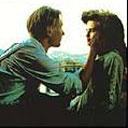
Author: As a student, EM (Edward Morgan) Forster (1879-1970) was part of the Cambridge Conversazione Society, several members of which went on to form the Bloomsbury group. In 1901 he took his first tour of Italy (with his mother), and his notebooks reveal that he already had the idea for the story that was to become A Room With a View. However, other ideas intervened, and Where Angels Fear to Tread (1905) - another story of English visitors to Italy - became his first published novel. Having gone through considerable rewriting, A Room With a View emerged in 1908. Forster's third book, Howards End (1910), proved his breakthrough, establishing him as the preeminent literary commentator on the British class system. He continued to travel, including a spell in 1921 working for the maharajah of Dewas; this experience inspired his final novel, A Passage to India (1924). Forster wrote journalism, travel books and essays, including the seminal critical text, Aspects of the Novel (1927), and the 1938 essay Two Cheers for Democracy. He died in 1970, shortly after accepting the Order of Merit.
The story: Essentially a critique of repressive British social convention, A Room With a View opens at the Pension Bertolini in Florence, where Lucy Honeychurch is staying with her cousin Charlotte Bartlett. There she meets the eccentric "socialist" Emerson, and his son George; during one excursion George "insults" Lucy by impulsively kissing her. On her return to England, Lucy becomes engaged to the pompous Cecil Vyse, but her life is disrupted when the Emersons rent a villa in the same village, Summer Street. Lucy eventually succumbs to her emotions, breaks her engagement with Vyse, and marries George.
The film-makers: American-born James Ivory (b 1928) met Indian producer Ismail Merchant (1936-2005) at the 1961 Cannes film festival, and the pair bonded over Merchant's plan to make English-language films in India. Their first production was an adaptation of Ruth Prawer Jhabvala's novel The Householder (1963). Jhabvala collaborated on their string of India-set, low-budget films, culminating with Heat and Dust (1983). Merchant Ivory turned to A Room With a View, casting the then little-known actress Helena Bonham Carter in the lead. A Room With a View's success (taking seven times its $3m budget in the US alone) encouraged two further Forster adaptations, Maurice (1987) and Howards End (1992).
How the book and film compare: The film is remarkably faithful to its source material, with whole scenes lifted almost verbatim from the page. Many of the chapter headings are retained, used as Brecht-style structural devices. The film does, however, dilute Forster's political concerns; all mention of Emerson's socialism is removed.
Inspirations and influences: A Room With a View proved a landmark in the rise of the British costume movie. Films like The Go-Between (1971), Tess (1979) and The French Lieutenant's Woman (1981) concentrated on serious-minded sexual subtexts; the deftness of Merchant Ivory's comic touch meant A Room With a View operated almost independently of historical context, and more like a mainstream romantic comedy. It paved the way for a revived interest in other comic narratives, principally the Jane Austen revival of the 1990s, with Sense and Sensibility (1995) and Emma (1996).

